In a historic moment for India’s infrastructure, the world’s highest single-arch railway bridge has officially opened in Jammu and Kashmir. Stretching across the Chenab River, the Chenab Rail Bridge is a stunning example of modern engineering and design. It’s a powerful symbol of connection, bringing the Kashmir Valley closer to the rest of the country by train for the very first time.
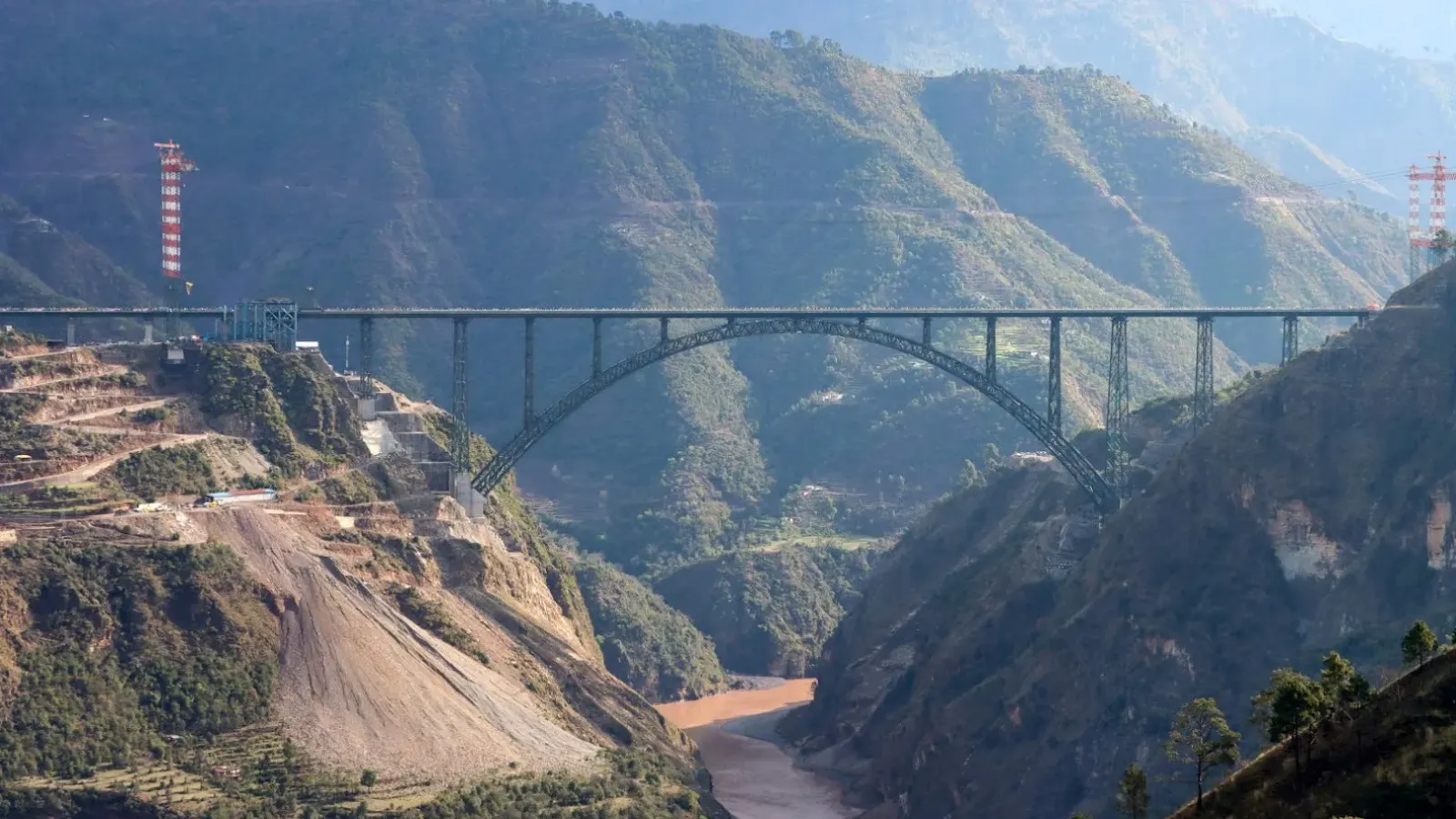
India Builds Record-Setting Railway Bridge in the Himalayas
Rising 359 metres above the river, higher than the Eiffel Tower, the Chenab Bridge now holds the world record for the tallest railway bridge. It’s part of the larger Udhampur-Srinagar-Baramulla Rail Link (USBRL) project, which aims to give Kashmir year-round rail access despite its tough mountain terrain and harsh weather. This bridge is constructed from steel and concrete. It’s a new lifeline for the region, opening doors for travel, trade, and growth.
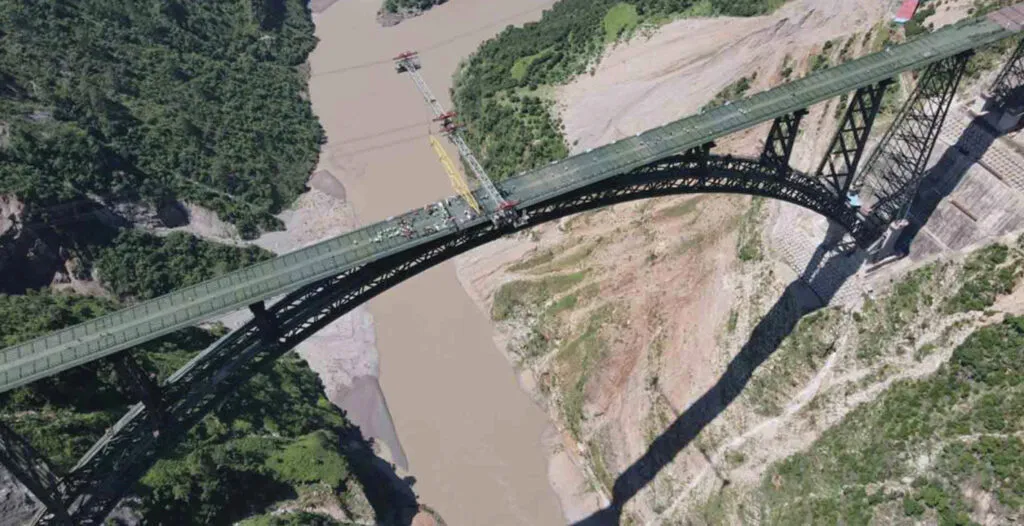
Structural Design and Engineering Challenges
Constructing a railway bridge in one of the most geologically complex and seismically active regions of the world was always going to be an enormous challenge. Spanning 1.3 kilometres (1315 metres) across the Chenab River, the arch bridge rests between the Bakkal and Kauri villages in the Reasi district of Jammu and Kashmir.
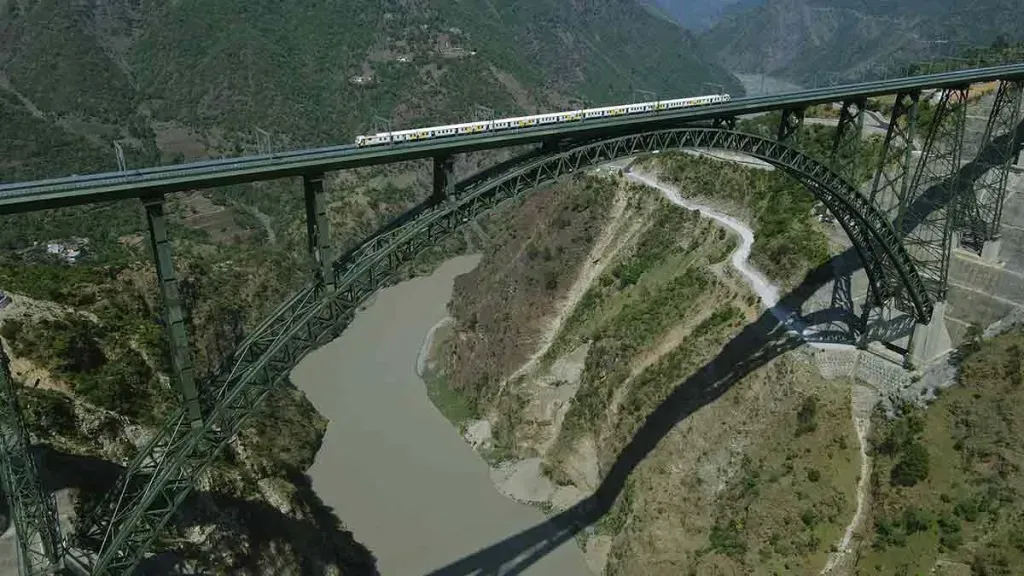
The bridge’s single-arch design, which curves gracefully across the dramatic gorge, is the crown jewel of this engineering triumph. The steel arch was built using a technique called incremental launching from both banks of the river, a logistical and engineering nightmare turned into reality through precision planning and innovation.
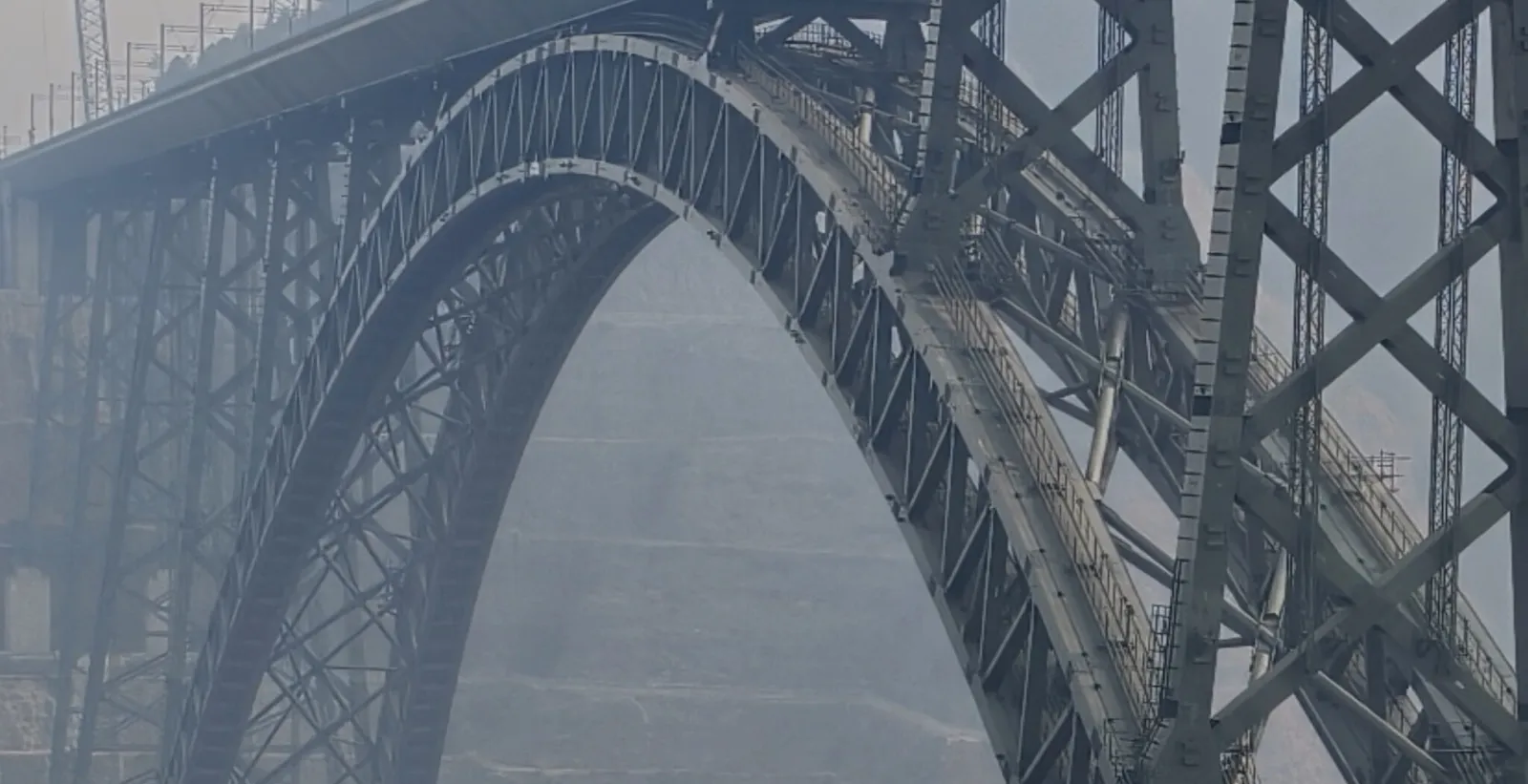
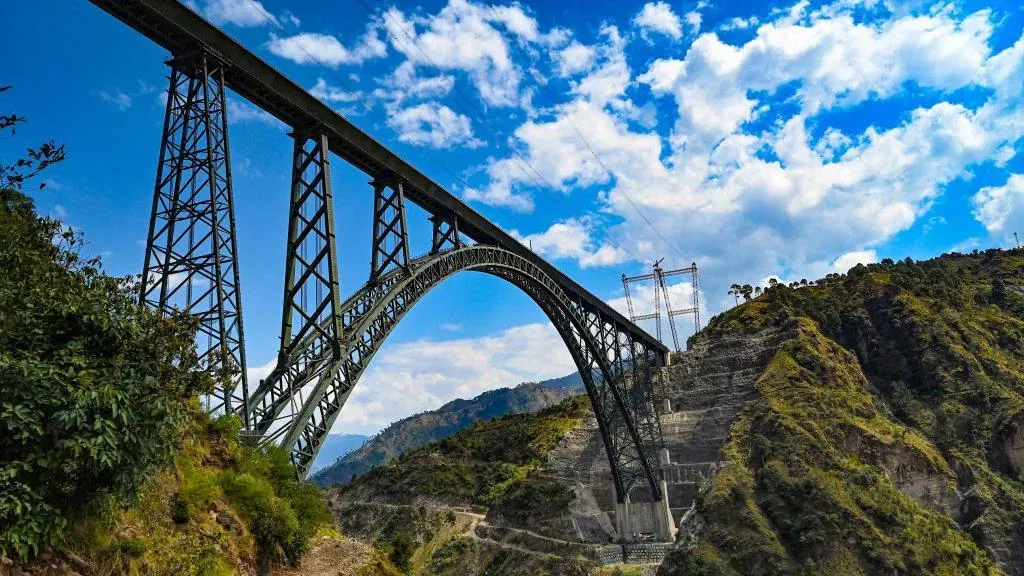
The project was spearheaded by the Konkan Railway Corporation Limited (KRCL), in collaboration with Indian Railways and Afcons Infrastructure, with structural support from DRDO and several European engineering firms. It required over 28,000 tonnes of steel and 66,000 cubic metres of concrete. A specialized copper-bearing steel was used to make the bridge corrosion-resistant, a crucial requirement given the altitude and the fluctuating weather conditions in the Himalayas.
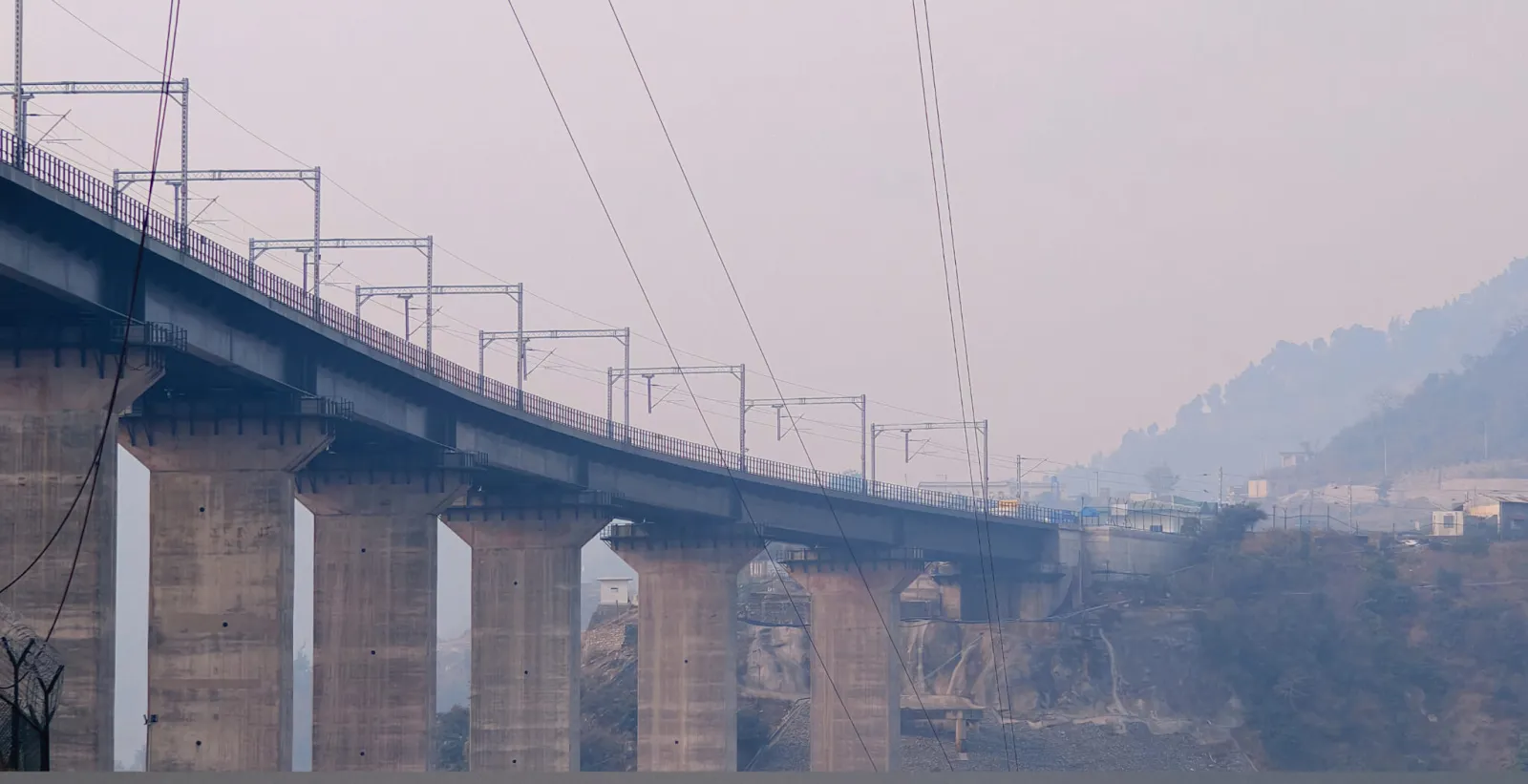
The arch alone, a record-setting achievement in itself, stretches 467 metres and is supported by two massive concrete pylons anchored deep into the Himalayan rock. The bridge is designed to withstand winds up to 260 km/h and seismic activity of zone V intensity, no small feat in a region often shaken by earthquakes.
Safety Features and Seismic Design of Chenab Bridge
Given the sensitivity of the region and the terrain, safety was paramount. The Chenab Bridge was constructed following the highest international standards, with robust blast-proof materials, automatic signaling systems, and real-time monitoring technologies.
Engineers incorporated health monitoring sensors across the structure to measure internal stress, vibrations, and temperature, which are essential for long-term maintenance. The deck is designed for both passenger and freight trains and is lined with safety walkways and anti-trespassing features. A service road also runs along the base for inspection and emergency maintenance access.

Importantly, during the construction phase, workers often labored in extreme weather conditions from icy winds in winter to sweltering summer days. Aerial cable cranes, some of the longest in the world, were used to ferry materials across the gorge. Helicopters, drones, and cableway systems played pivotal roles in assembling key components in hard-to-reach areas.
Connecting Kashmir
Prime Minister Narendra Modi officially inaugurated the bridge as part of a broader push to improve connectivity and economic development in Jammu and Kashmir. He also flagged off a Vande Bharat Express trial run on the newly completed section of the USBRL project, signaling the first electric train service into Kashmir.
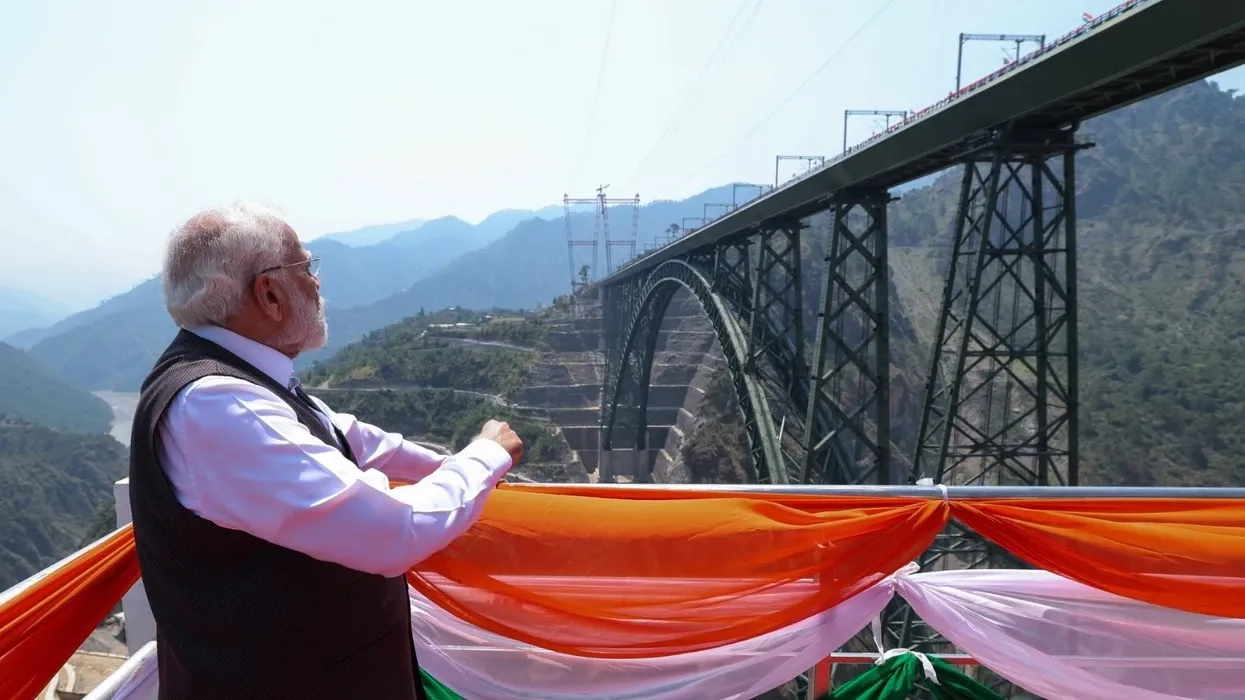
This railway line and the bridge in particular will dramatically reduce travel time between Jammu and the Kashmir Valley. Once fully operational, trains will connect the towns of Katra and Banihal, and eventually link Srinagar directly with the Indian railway network, offering an affordable and efficient mode of transport for both locals and tourists.
The symbolism of the bridge goes far beyond its engineering. For decades, the Kashmir Valley has been relatively isolated from the rest of India, both geographically and emotionally. The Chenab Bridge represents a step toward bridging that gap literally and metaphorically.
Environmental Considerations and Sustainability
While undertaking such a massive project in a fragile ecosystem, Indian Railways took several measures to minimize the environmental impact. The alignment of the bridge and the rail track was designed to avoid major forest areas and wildlife corridors. Where deforestation was unavoidable, compensatory afforestation was carried out.
Advanced tunneling techniques were employed to drill through the Pir Panjal range while reducing ecological disruption. Noise pollution control, erosion management, and groundwater preservation were prioritized throughout the construction timeline. The bridge is also part of a broader electrified rail route, aimed at reducing dependence on diesel locomotives and cutting carbon emissions.
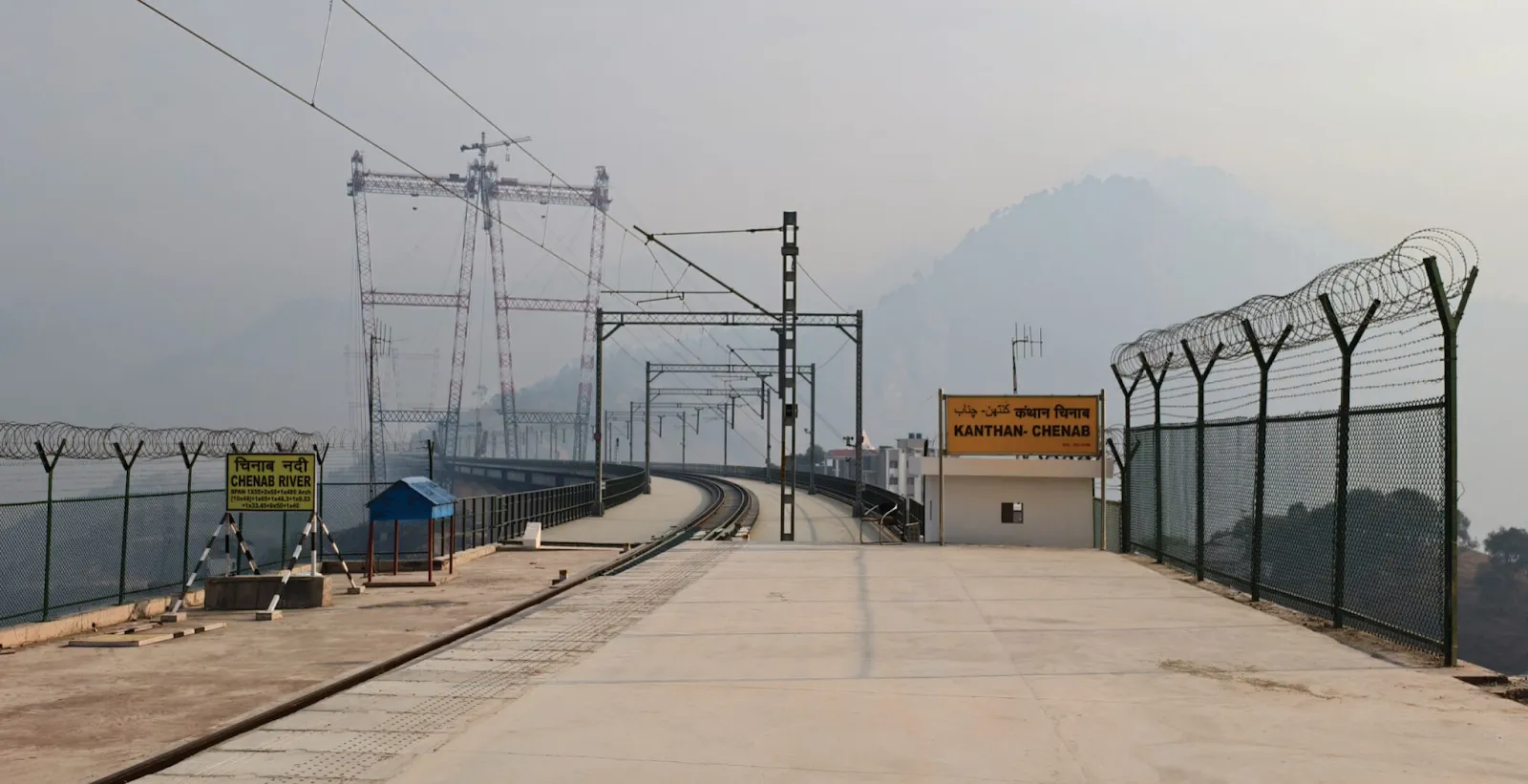
Global Recognition
The Chenab Bridge has earned widespread acclaim from international civil engineering and architecture communities. Experts compare its engineering challenges to those faced in constructing the Millau Viaduct in France or the Akashi Kaikyō Bridge in Japan. With its combination of extreme height, difficult terrain, and seismic risk, the Chenab Bridge is widely regarded as one of the most challenging railway projects attempted in modern times.
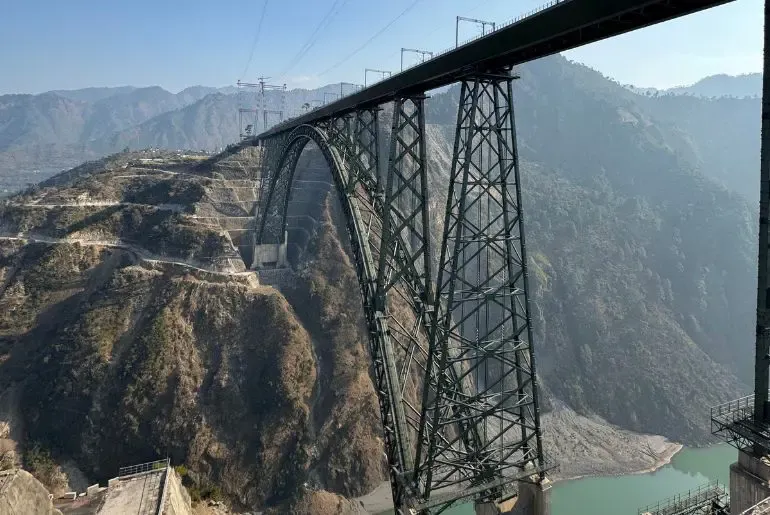
In terms of project scale, the USBRL includes 38 tunnels and over 900 bridges across its 272 km stretch, of which the Chenab Bridge is the crowning achievement. The entire project required over two decades of planning and execution, with several delays due to terrain and funding, but the results are now visible for the world to admire.
India’s decision to invest in high-end infrastructure in one of its most remote and geopolitically sensitive regions demonstrates a commitment to national integration and development.
Chenab Rail Bridge Project details:
PROJECT OVERVIEW
Project Name: Chenab Rail Bridge
Location: Between Bakkal (Katra) and Kauri (Reasi District), Jammu & Kashmir, India
Purpose: Rail connectivity between the Kashmir Valley and the rest of India
Part of: Udhampur-Srinagar-Baramulla Rail Link (USBRL) Project
Project Executing Agency: Indian Railways (Konkan Railway Corporation Limited)
Engineering Partner: Afcons Infrastructure (India), DRDO, and international consultants
TECHNICAL SPECIFICATIONS
Bridge Type: Arch Bridge (Steel arch, single-span)
Height Above River Bed: 359 metres (1,178 feet)
Total Length: 1,315 metres (1.3 km)
Arch Span: 467 metres
Deck Width: 13.5 metres
Track Type: Single broad gauge (electrified)
Wind Resistance: Up to 260 km/h
Seismic Zone Rating: Designed to withstand Zone V earthquake intensity



















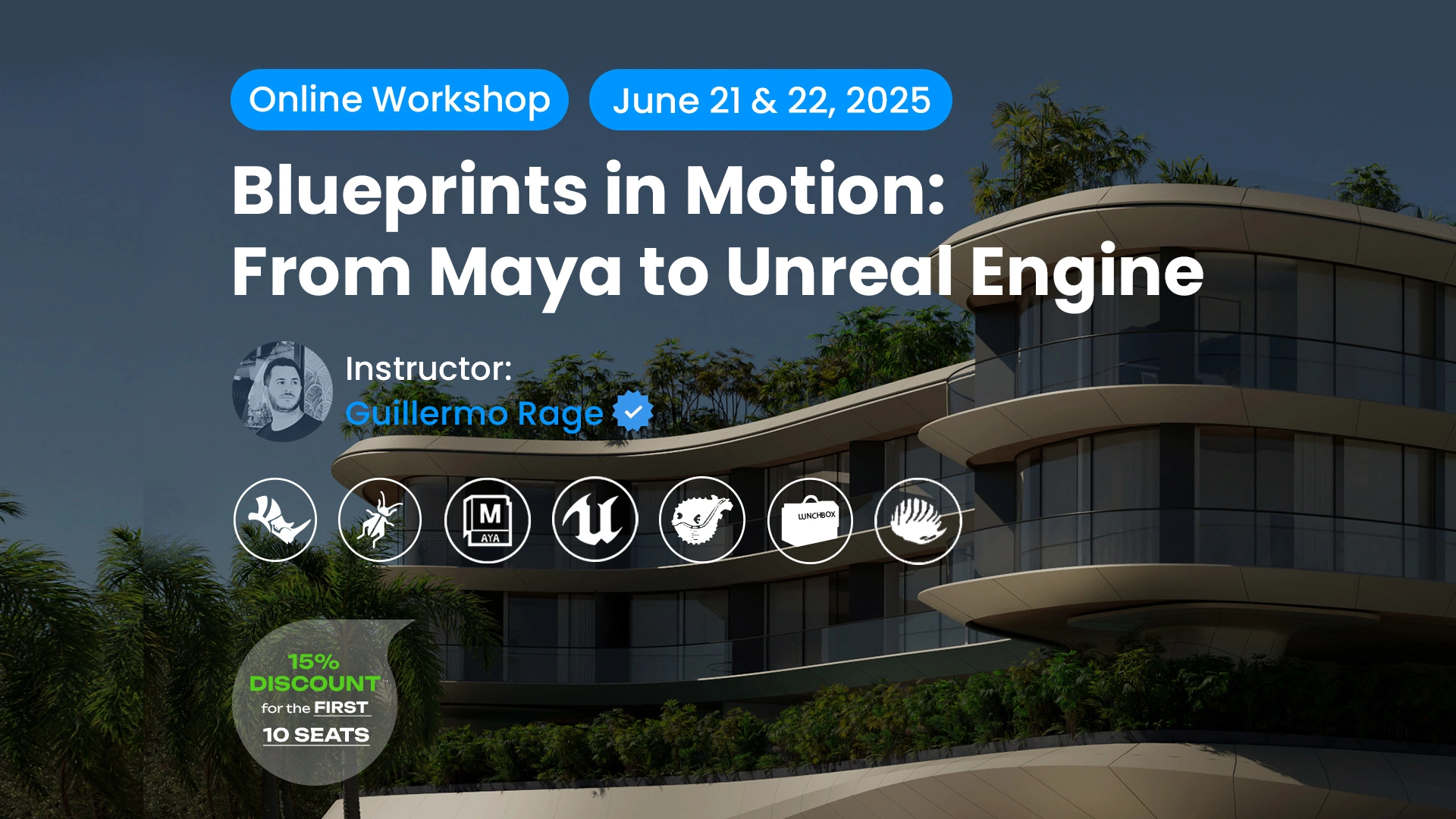











Leave a comment